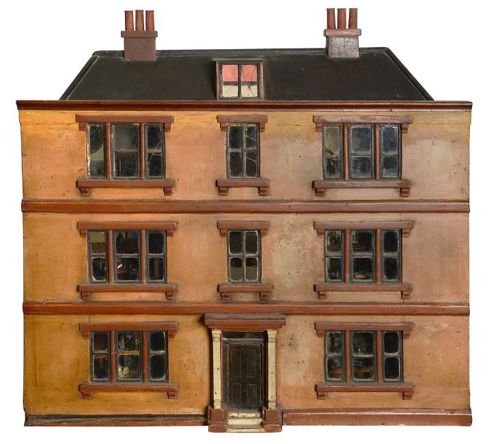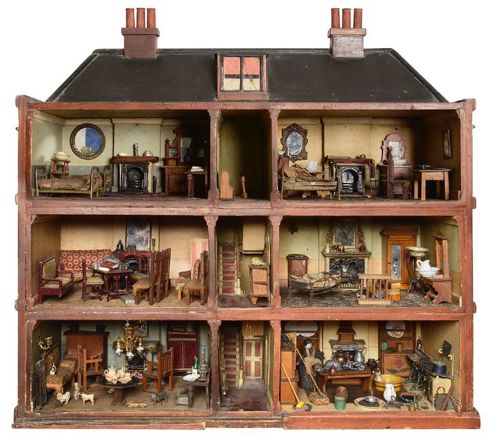Antique Collecting Magazine November 2022
No Content Set
Exception:
Website.Models.ViewModels.Blocks.PageBlocks.BillboardBlocks.InlineBillboardBlockVm
16th November 2022
Child's Play
Article first published in Antique Collecting Magazine November 2022
Child's play
A Georgian dolls' house is expected to make £2,000-£3,000 at a single owner sale of early children's games at Catherine Southon's sale at Fairleigh Court Golf Club in Surrey on November 16th.

Filled with items of miniature furniture, including tiny washstands, chairs and even a tea service, the six-roomed, four-storey house even contains a kitchen maid and a parlour full of cats, dogs and a rabbit.
The rooms are decorated in the style of the day, with some even decorated with tiny period mirrors, while the kitchen is stacked with the latest labour-saving devices including a carpet beater and mangle.

In the 18th century, when the house was made, dolls' houses were built as replicas of family homes.
The miniature mansions date from the 1600s, when they were known as baby houses, becoming popular in the Netherlands and Germany where they provided a visual aid for young and often illiterate girls to learn household management.
But by the early 20th century, dolls' houses had become a staple of the middle and upper-class nursery.
The largest, and arguably the most famous, dolls' house was built for Queen Mary by the architect, Sir Edwin Lutyens, between 1921 and 1924 and presented to her as a 'gift from the nation'. It was exhibited at the British Empire Exhibition in 1924 and is now displayed at Windsor Castle.
Easy as ABC
At the same sale, an early 19th-century child's mosaic alphabet (c.1820) is expected to make £100- £200.

The paper-covered wooden box, with a sliding cover, bears a hand-coloured label titled Mosaik Alphabete. Alphabets of European Letters in Mosaic. It is also titled in German and French and illustrated with children intent on learning.
Measuring 7½ × 7½in (19 × 19cm), the box contains a quantity of brightly-painted wooden alphabet tesserae as well as a part hand-coloured printed folding alphabet diagram to aid learning.
From the earliest years of the 18th century children's games had started to become colourful and fun.
The period saw a huge boom in reading with the concurrent need to teach children their ABCs. Letter games were a popular Georgian pastime, not only for recreation but to reinforce the importance of literature.
At the same sale an early 19th-century (c. 1830) pictorial alphabet set, 8.7cm tall and housed in a turned wooden box, has an estimate of £80-£120.
The circular box contains 31 round discs printed with lithographed letters on one side and a hand-coloured illustration of the same letter on the other. The letter 'A' is backed with an illustration of an ass, with the 'J' a bright depiction of a jester.
Catherine Southon said: "In the run up to Christmas these games are a charming reminder of simpler times."
Sign up for Catalogue Alerts
Be the first to know about when our auction catalogues, upcoming valuation days and latest auction insights